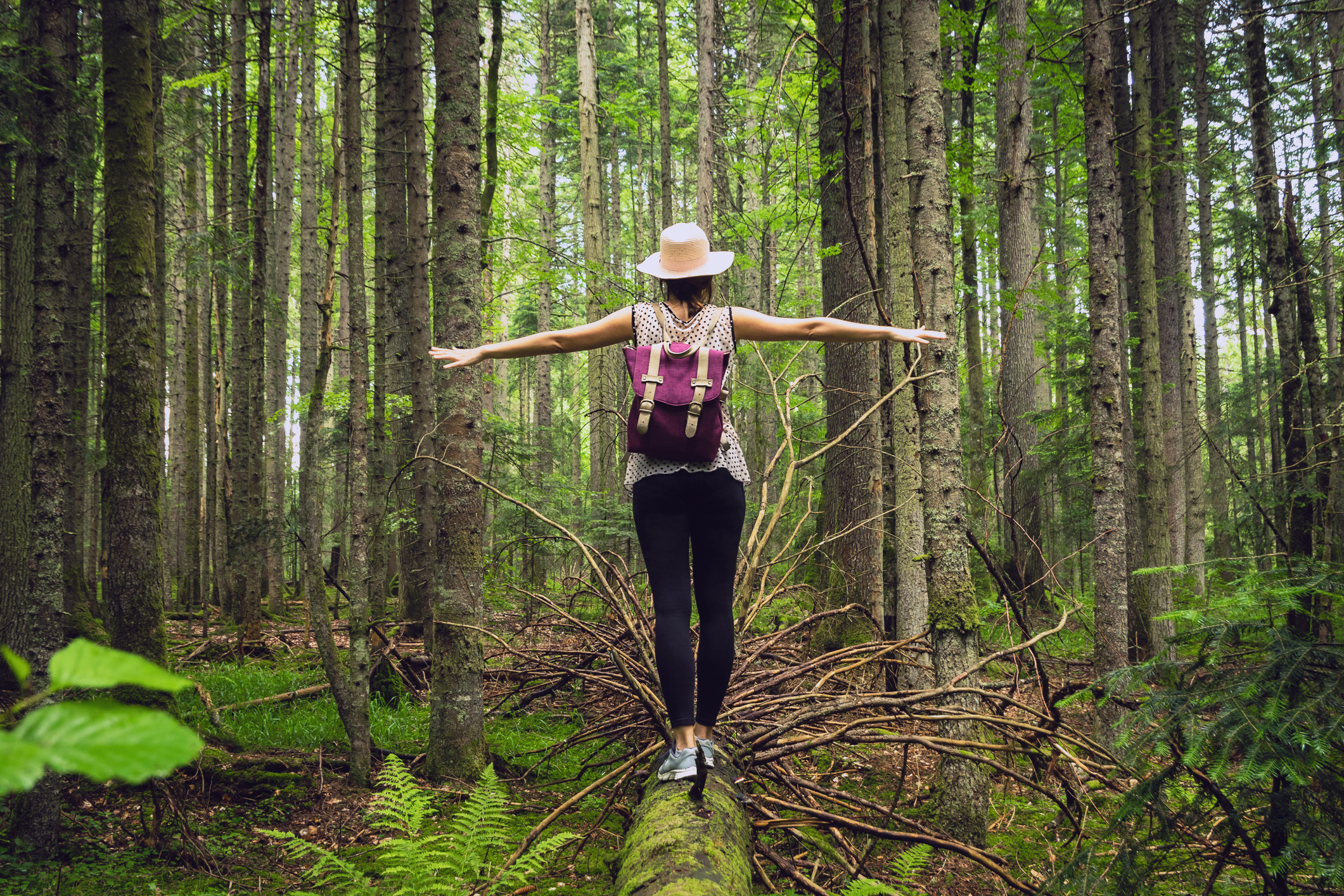Shinrin-yoku (Forest Bathing) for Your Well-Being

By Jason Frye
“Go outside; the fresh air will do you some good!” That commonly used phrase (often by our parents) is actually true! To get the most from the great outdoors, you could probably use a little guidance. The practice of Shinrin-yoku – a Japanese term that translates to “forest bathing” or “absorbing the forest atmosphere” – might be just what you need.
Benefits
Shinrin-yoku, commonly called Forest Bathing, originated in Japan in the 1980s when researchers discovered conclusive evidence that the practice of being outside surrounded by nature has definitive impacts on your health, wellness and happiness. Forest Bathing helps lower your blood pressure and pulse rate; it reduces concentrations of cortisol, the so-called “stress hormone;” and increases parasympathetic nerve activity, helping you grow calm and more at ease; all of which leads to a healthier and happier you.
Forest bathing is, at heart, quite simple. You spend time in a forested area and slow down, use all your senses to observe the place and animals and plants around you, and connect with nature. No phone buzzing in your pocket, no headphones distracting you with a song or podcast, no camera drawing your attention elsewhere for an Instagram-worthy shot, just you and nature. Easy.
Forest Bathing Spots
According to Christine Hoyer, a certified Nature and Forest Therapy Guide who operates the Gatlinburg, Tennessee-based Mindful Meanders and leads Forest Bathing walks in Great Smoky Mountains National Park and on nearby trails, you can do it “anywhere – find a trail, a tree, a rock, or a river to sit alongside.”
“The Smokies offers a place of abundance which holds an extraordinary diversity of resources – from the species and ages of the trees to the little creeks and mighty waterfalls, the dynamic rock formations to the many different animals and plants that may cross your path. No matter where you meander or sit in the Smokies, there’s so much that is alive to notice, explore and experience.”
Great Smoky Mountains National Park offers more than a half-million acres of near-ideal space for forest bathing, but, as Hoyer points out, if you’d like to meander mindfully and get the most from your experience, you’ll want to find a place that’s less busy than the park’s most popular trails. “In order to give yourself the chance to tune into your senses, the space to tune into the natural beings around you, and the time to see yourself mirrored in natures in some way, you want it to be a quiet place without a whole lot of other humans or other noise to distract you,” she says.
That’s why you can, and should, look for places in National Parks to do a little forest bathing, but also why you should look elsewhere. National forests, state parks, nature conservancies, arboretums and gardens can all make for excellent forest bathing spots.
In California’s Mariposa County, the Stanislaus and Sierra National Forests border Yosemite National Park, and give forest bathing practitioners the chance to avoid the crowds while still enjoy the stunning scenery. Stanislaus National Forest has some 500 miles of hiking trails that skirt streams, pass old-fashioned swimming holes, and get you close to waterfalls big and small. The Sierra National Forest gives you some sweeping changes in elevation and the grassy foothills, dense forests, and alpine meadows you’d expect to find in the Sierras. While you’re here, don’t miss the chance to go forest bathing in the Mariposa and Merced Groves of giant sequoia trees where you can experience some of the largest living things on earth in an entirely new way.
But you don’t have to head west to find great forest bathing opportunities.
In Sylva, North Carolina, the 1,000-acre Pinnacle Park sees Dr. Mark Ellison lead countless walks a year.
In South Carolina, the COWASSE Basin – a 325,000-acre tract of land east of Columbia – includes Congaree National Park, Poinsette State Park, Manchester State Forest, Congaree Bluffs Heritage Preserve, Sparkleberry Swamp, Wateree Swamp, and segments of the Palmetto Trail introduces an entirely different set of environments from either the Smokies or Sierras to forest bathers.
Across Georgia, Certified Nature and Forest Therapy Guides lead forest bathing excursions on protected lands, in parks and preserves, and in pockets of wilderness across the state, from Woodlands Garden of Decatur (in Decatur) to the Hambidge Center, an artist community in the wild woods of North Georgia, to urban outings in Atlanta.
Many health experts in Japan and here in the U.S. say you can maximize the benefits of forest bathing by do it regularly, but with our busy lives and varied access to national parks and other public lands, how can you incorporate the principles of shinrin-yoku into your daily routine and make forest bathing a part of your life?
Closer to Home
“You can benefit from the gifts and presence of nature wherever you are,” says Hoyer. “You don’t need to venture to a state park or national park or even leave your backyard.”
Next time you’re on a neighborhood walk, on a stroll through your favorite park, or are spending a few quiet moments in your own yard, try Hoyer’s at-home method.
Simply put your phone (and everything else) down for 20 minutes and sit quietly while you observe what unfolds around you.
Tune into each of your senses. What do you see? What do you hear? What do you feel? What do you smell?
Pick up something – a stone, a leaf, a pinecone or magnolia pod – and hold it in your hand. Observe it with each of your senses, first with eyes open, then with eyes closed.
And, most importantly, slow down. Be still, look for what is in motion around you. Slow your thoughts, breathe rhythmically and let nature do its thing.